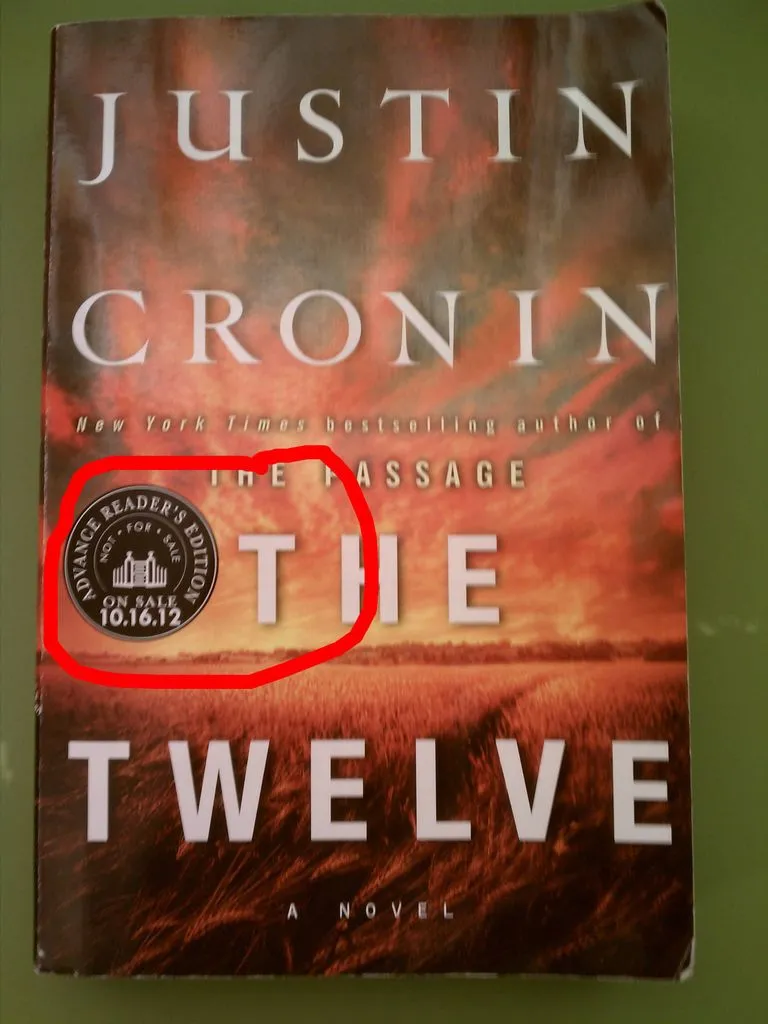
A Beginner’s Guide to Identifying First Editions: Part Two
In “A Beginner’s Guide to Identifying First Editions: Part One“, we went over the most obvious ways to discover if your book is a first edition. The biggest obstacle to easily identifying first editions is the fact that every publishing house does it differently, so if you have specific questions, consult this guide.
In Part Two, we’re going to address a few special circumstances that can be problematic to the process of first edition identification. Like, you know, someone scribbling all over your copyright page in Sharpie (not really).
Internationally Published Books
If the book is published in one country earlier than others, that earliest release is the “true first.” However, some books are released on the same day in different countries, but they’ll have different covers. In this case, the general rule of thumb is that the copies published in the author’s own country are the “true” first edition. Some internationally published books will say on the copyright page, “First Insert-Your-Country Edition,” indicating that there is an earlier printing in another country. For example, my copy of Harry Potter and the Goblet of Fire is a first American edition, which is not a true first. A true first edition would be the British edition because that is where the author lives.
 Book Club Editions
In many countries, book club editions are clearly labeled as such. In the United States, however, they often look exactly like a first edition at first glance. Book club editions are often made using the exact production plates the publishers use, so they may be virtually identical.
A few clues that you might have a BCE: there is no price on the book’s jacket, and/or there is no barcode (on books published after barcodes were used). Some will say “Book Club Edition” on the inside flaps of the dust jacket. For example, my copy of Daphne Du Maurier’s The Glassblowers is totally identical to the first American edition, except it says “book club edition” on the inside front flap (As an aside, notice how this seller puts “first edition” in the title of the purchase, but in the description notes that it’s actually a first USA edition- not a true first, since the book was first published in London. These are the things you have to beware of when buying older books.).
Book Club Editions
In many countries, book club editions are clearly labeled as such. In the United States, however, they often look exactly like a first edition at first glance. Book club editions are often made using the exact production plates the publishers use, so they may be virtually identical.
A few clues that you might have a BCE: there is no price on the book’s jacket, and/or there is no barcode (on books published after barcodes were used). Some will say “Book Club Edition” on the inside flaps of the dust jacket. For example, my copy of Daphne Du Maurier’s The Glassblowers is totally identical to the first American edition, except it says “book club edition” on the inside front flap (As an aside, notice how this seller puts “first edition” in the title of the purchase, but in the description notes that it’s actually a first USA edition- not a true first, since the book was first published in London. These are the things you have to beware of when buying older books.).

 When comparing a book club edition to the actual first edition, the BCE’s copyright page may be missing the words “First Edition” or the impression line of numbers. Some BCE copyright pages will identify the name of the book club.
The most reliable way to identify a Book of the Month Club edition is the blind stamp on the back cover (if it is a hardback). A blind stamp is a small impression on the back, near the spine. It can be a circle, square, or any other shape. Book of the Month Club (and a few other book clubs) started using blind stamps after 1947, so if your book predates that, you will have to use a different method for differentiating it from a true first. For the most part, you will have to research it on a book-by-book basis (a good idea for any book published before 1947, whether you suspect it is a BCE or not). If the book in question is paperback, BCEs are often larger than regular paperbacks and sometimes have different quality paper.
First Thus
When you’re researching first editions or looking to buy one, you might come across the term “first thus.” This means the book is not a true first edition, but is a first edition of a completely new reprinting. For example, the first edition of the paperback version of the book, or the first edition of a reprinting of a classic– these are “first thus” editions.
Multiple Copyright Dates
If you have a collection of short stories or a volume of poetry, it’s likely that you’ll find more than one copyright date on the copyright page. This just means that the stories/poems in the books were published previously in other books, journals, magazines, or wherever. If there’s no “first edition” or impression line for you to reference, check the title page. If the date on the title page matches the latest date in the line of dates on the copyright page, you likely have a first edition. If there’s no date on the title page and no further indication on the copyright page, you’ll have to research the volume individually. This copyright page from a collection of Robert Frost’s poems is an example of multiple copyrights for the poems within:
When comparing a book club edition to the actual first edition, the BCE’s copyright page may be missing the words “First Edition” or the impression line of numbers. Some BCE copyright pages will identify the name of the book club.
The most reliable way to identify a Book of the Month Club edition is the blind stamp on the back cover (if it is a hardback). A blind stamp is a small impression on the back, near the spine. It can be a circle, square, or any other shape. Book of the Month Club (and a few other book clubs) started using blind stamps after 1947, so if your book predates that, you will have to use a different method for differentiating it from a true first. For the most part, you will have to research it on a book-by-book basis (a good idea for any book published before 1947, whether you suspect it is a BCE or not). If the book in question is paperback, BCEs are often larger than regular paperbacks and sometimes have different quality paper.
First Thus
When you’re researching first editions or looking to buy one, you might come across the term “first thus.” This means the book is not a true first edition, but is a first edition of a completely new reprinting. For example, the first edition of the paperback version of the book, or the first edition of a reprinting of a classic– these are “first thus” editions.
Multiple Copyright Dates
If you have a collection of short stories or a volume of poetry, it’s likely that you’ll find more than one copyright date on the copyright page. This just means that the stories/poems in the books were published previously in other books, journals, magazines, or wherever. If there’s no “first edition” or impression line for you to reference, check the title page. If the date on the title page matches the latest date in the line of dates on the copyright page, you likely have a first edition. If there’s no date on the title page and no further indication on the copyright page, you’ll have to research the volume individually. This copyright page from a collection of Robert Frost’s poems is an example of multiple copyrights for the poems within:
 ARCs
An ARC is an advance review copy (as many of you bloggers out there know), and it is not a first edition. It actually pre-dates the first edition — it’s a paperback copy of the book (often uncorrected, so it may contain typos) that the publishers send out to reviewers before the pub date. They’re easy to identify–they’ll say “advance review copy” or something similar, have no barcode or price, say “not for resale,” and often have the publisher’s marketing plans and the book’s release date on the back or spine. Sometimes the cover is different from the final book. Whether or not an ARC is valuable to a collector really depends on the collector–a completist will probably want them. However, most publishers are very strict about the “not for resale” thing, so buying them is an iffy proposition that is best avoided. Here’s an example of an ARC of Justin Cronin’s The Twelve, which says “not for sale” on the front and has the marketing info/uncorrected proof declaration on the back:
ARCs
An ARC is an advance review copy (as many of you bloggers out there know), and it is not a first edition. It actually pre-dates the first edition — it’s a paperback copy of the book (often uncorrected, so it may contain typos) that the publishers send out to reviewers before the pub date. They’re easy to identify–they’ll say “advance review copy” or something similar, have no barcode or price, say “not for resale,” and often have the publisher’s marketing plans and the book’s release date on the back or spine. Sometimes the cover is different from the final book. Whether or not an ARC is valuable to a collector really depends on the collector–a completist will probably want them. However, most publishers are very strict about the “not for resale” thing, so buying them is an iffy proposition that is best avoided. Here’s an example of an ARC of Justin Cronin’s The Twelve, which says “not for sale” on the front and has the marketing info/uncorrected proof declaration on the back:

 Resources
First-Edition Identification by Publisher
UVA’s Syllabus for Bestsellers of 20th Century American Literature– they have some excellent information about several books in that category, including who first published it, the number of pages, and what the first editions look like.
An excellent article on valuing/buying/selling first editions, including tips on where you can find out if your copy is valuable.
The folks at AbeBooks recommend a few books on the subject: Bill McBride’s Pocket Guide to the Identification of First Editions, and Collected Books by Allen & Patricia Ahearn.
Resources
First-Edition Identification by Publisher
UVA’s Syllabus for Bestsellers of 20th Century American Literature– they have some excellent information about several books in that category, including who first published it, the number of pages, and what the first editions look like.
An excellent article on valuing/buying/selling first editions, including tips on where you can find out if your copy is valuable.
The folks at AbeBooks recommend a few books on the subject: Bill McBride’s Pocket Guide to the Identification of First Editions, and Collected Books by Allen & Patricia Ahearn.
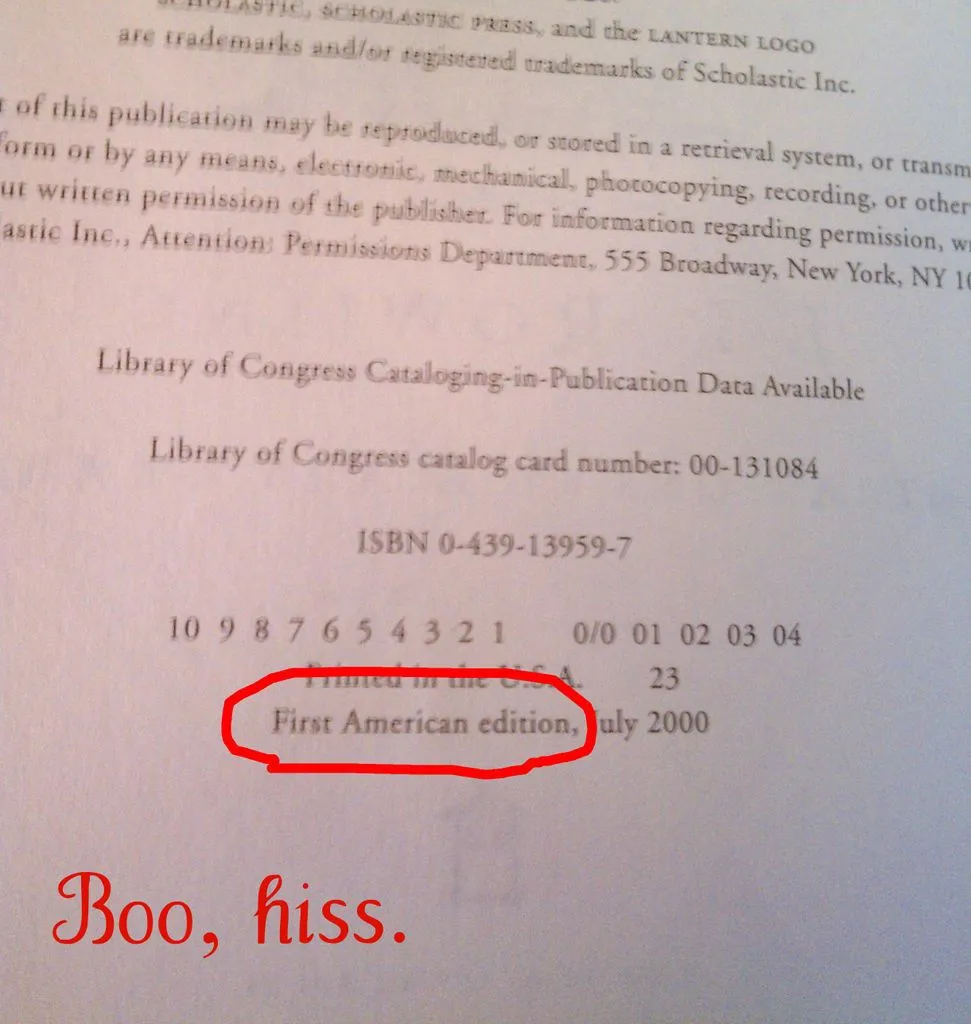 Book Club Editions
In many countries, book club editions are clearly labeled as such. In the United States, however, they often look exactly like a first edition at first glance. Book club editions are often made using the exact production plates the publishers use, so they may be virtually identical.
A few clues that you might have a BCE: there is no price on the book’s jacket, and/or there is no barcode (on books published after barcodes were used). Some will say “Book Club Edition” on the inside flaps of the dust jacket. For example, my copy of Daphne Du Maurier’s The Glassblowers is totally identical to the first American edition, except it says “book club edition” on the inside front flap (As an aside, notice how this seller puts “first edition” in the title of the purchase, but in the description notes that it’s actually a first USA edition- not a true first, since the book was first published in London. These are the things you have to beware of when buying older books.).
Book Club Editions
In many countries, book club editions are clearly labeled as such. In the United States, however, they often look exactly like a first edition at first glance. Book club editions are often made using the exact production plates the publishers use, so they may be virtually identical.
A few clues that you might have a BCE: there is no price on the book’s jacket, and/or there is no barcode (on books published after barcodes were used). Some will say “Book Club Edition” on the inside flaps of the dust jacket. For example, my copy of Daphne Du Maurier’s The Glassblowers is totally identical to the first American edition, except it says “book club edition” on the inside front flap (As an aside, notice how this seller puts “first edition” in the title of the purchase, but in the description notes that it’s actually a first USA edition- not a true first, since the book was first published in London. These are the things you have to beware of when buying older books.).
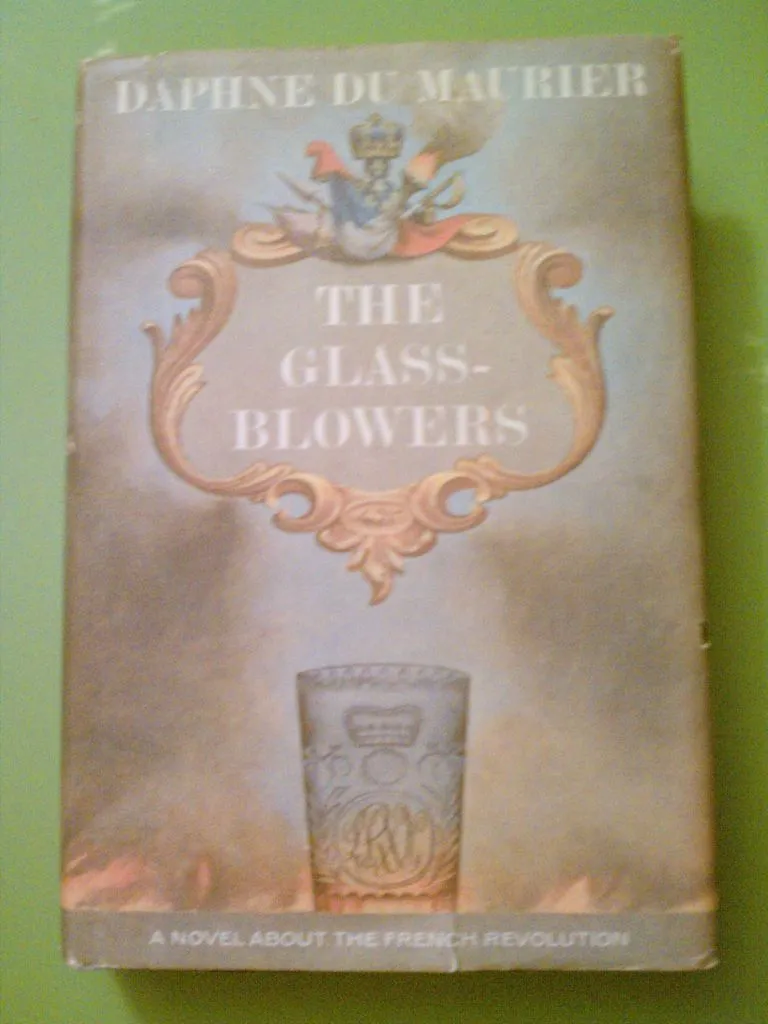
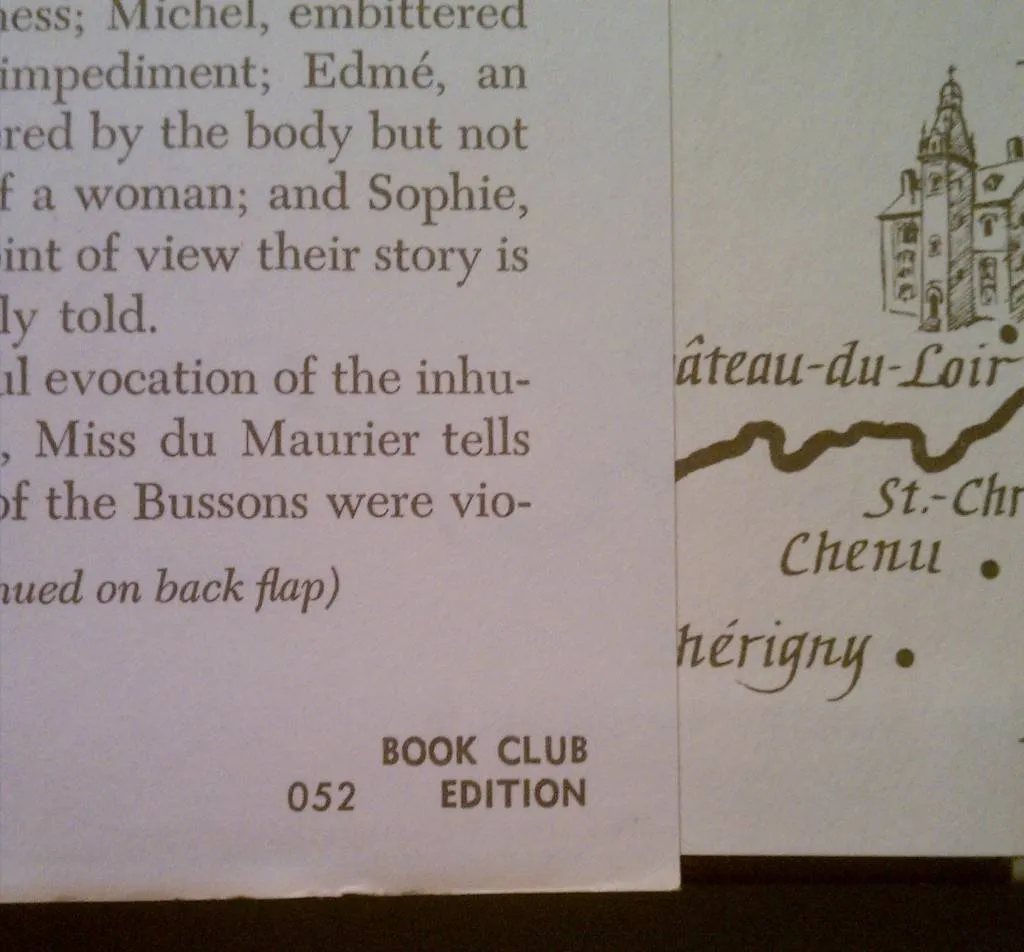 When comparing a book club edition to the actual first edition, the BCE’s copyright page may be missing the words “First Edition” or the impression line of numbers. Some BCE copyright pages will identify the name of the book club.
The most reliable way to identify a Book of the Month Club edition is the blind stamp on the back cover (if it is a hardback). A blind stamp is a small impression on the back, near the spine. It can be a circle, square, or any other shape. Book of the Month Club (and a few other book clubs) started using blind stamps after 1947, so if your book predates that, you will have to use a different method for differentiating it from a true first. For the most part, you will have to research it on a book-by-book basis (a good idea for any book published before 1947, whether you suspect it is a BCE or not). If the book in question is paperback, BCEs are often larger than regular paperbacks and sometimes have different quality paper.
First Thus
When you’re researching first editions or looking to buy one, you might come across the term “first thus.” This means the book is not a true first edition, but is a first edition of a completely new reprinting. For example, the first edition of the paperback version of the book, or the first edition of a reprinting of a classic– these are “first thus” editions.
Multiple Copyright Dates
If you have a collection of short stories or a volume of poetry, it’s likely that you’ll find more than one copyright date on the copyright page. This just means that the stories/poems in the books were published previously in other books, journals, magazines, or wherever. If there’s no “first edition” or impression line for you to reference, check the title page. If the date on the title page matches the latest date in the line of dates on the copyright page, you likely have a first edition. If there’s no date on the title page and no further indication on the copyright page, you’ll have to research the volume individually. This copyright page from a collection of Robert Frost’s poems is an example of multiple copyrights for the poems within:
When comparing a book club edition to the actual first edition, the BCE’s copyright page may be missing the words “First Edition” or the impression line of numbers. Some BCE copyright pages will identify the name of the book club.
The most reliable way to identify a Book of the Month Club edition is the blind stamp on the back cover (if it is a hardback). A blind stamp is a small impression on the back, near the spine. It can be a circle, square, or any other shape. Book of the Month Club (and a few other book clubs) started using blind stamps after 1947, so if your book predates that, you will have to use a different method for differentiating it from a true first. For the most part, you will have to research it on a book-by-book basis (a good idea for any book published before 1947, whether you suspect it is a BCE or not). If the book in question is paperback, BCEs are often larger than regular paperbacks and sometimes have different quality paper.
First Thus
When you’re researching first editions or looking to buy one, you might come across the term “first thus.” This means the book is not a true first edition, but is a first edition of a completely new reprinting. For example, the first edition of the paperback version of the book, or the first edition of a reprinting of a classic– these are “first thus” editions.
Multiple Copyright Dates
If you have a collection of short stories or a volume of poetry, it’s likely that you’ll find more than one copyright date on the copyright page. This just means that the stories/poems in the books were published previously in other books, journals, magazines, or wherever. If there’s no “first edition” or impression line for you to reference, check the title page. If the date on the title page matches the latest date in the line of dates on the copyright page, you likely have a first edition. If there’s no date on the title page and no further indication on the copyright page, you’ll have to research the volume individually. This copyright page from a collection of Robert Frost’s poems is an example of multiple copyrights for the poems within:
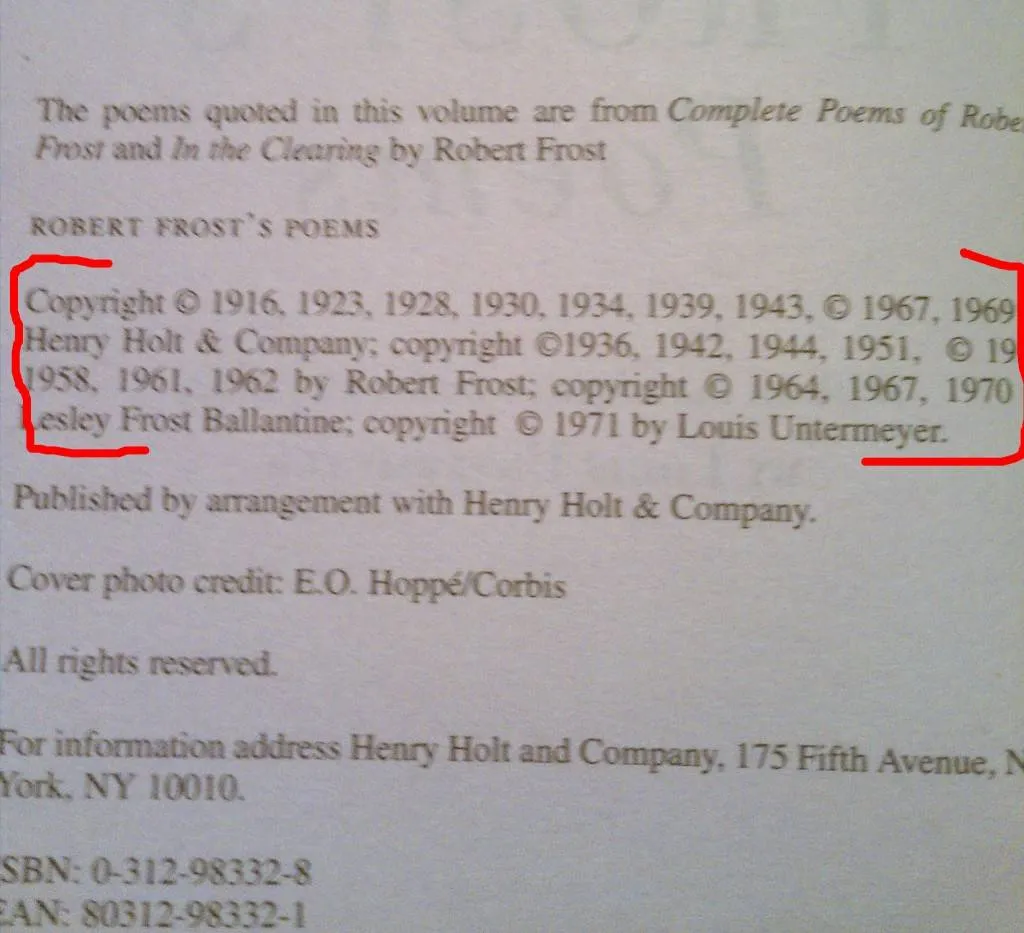 ARCs
An ARC is an advance review copy (as many of you bloggers out there know), and it is not a first edition. It actually pre-dates the first edition — it’s a paperback copy of the book (often uncorrected, so it may contain typos) that the publishers send out to reviewers before the pub date. They’re easy to identify–they’ll say “advance review copy” or something similar, have no barcode or price, say “not for resale,” and often have the publisher’s marketing plans and the book’s release date on the back or spine. Sometimes the cover is different from the final book. Whether or not an ARC is valuable to a collector really depends on the collector–a completist will probably want them. However, most publishers are very strict about the “not for resale” thing, so buying them is an iffy proposition that is best avoided. Here’s an example of an ARC of Justin Cronin’s The Twelve, which says “not for sale” on the front and has the marketing info/uncorrected proof declaration on the back:
ARCs
An ARC is an advance review copy (as many of you bloggers out there know), and it is not a first edition. It actually pre-dates the first edition — it’s a paperback copy of the book (often uncorrected, so it may contain typos) that the publishers send out to reviewers before the pub date. They’re easy to identify–they’ll say “advance review copy” or something similar, have no barcode or price, say “not for resale,” and often have the publisher’s marketing plans and the book’s release date on the back or spine. Sometimes the cover is different from the final book. Whether or not an ARC is valuable to a collector really depends on the collector–a completist will probably want them. However, most publishers are very strict about the “not for resale” thing, so buying them is an iffy proposition that is best avoided. Here’s an example of an ARC of Justin Cronin’s The Twelve, which says “not for sale” on the front and has the marketing info/uncorrected proof declaration on the back:

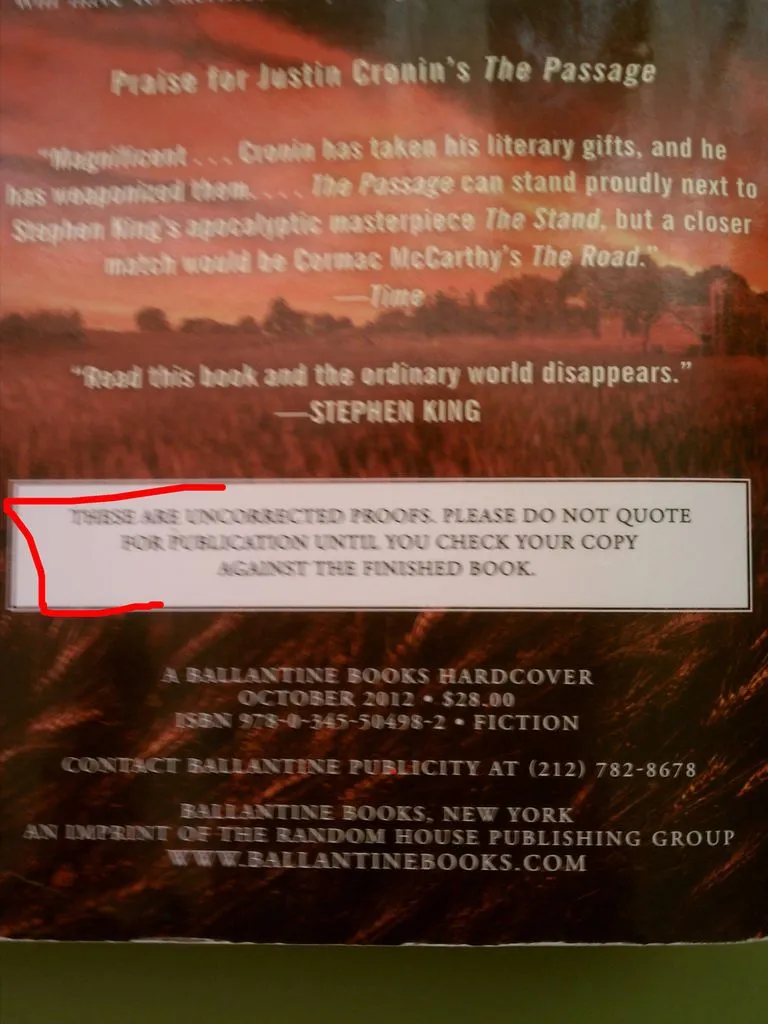 Resources
First-Edition Identification by Publisher
UVA’s Syllabus for Bestsellers of 20th Century American Literature– they have some excellent information about several books in that category, including who first published it, the number of pages, and what the first editions look like.
An excellent article on valuing/buying/selling first editions, including tips on where you can find out if your copy is valuable.
The folks at AbeBooks recommend a few books on the subject: Bill McBride’s Pocket Guide to the Identification of First Editions, and Collected Books by Allen & Patricia Ahearn.
Resources
First-Edition Identification by Publisher
UVA’s Syllabus for Bestsellers of 20th Century American Literature– they have some excellent information about several books in that category, including who first published it, the number of pages, and what the first editions look like.
An excellent article on valuing/buying/selling first editions, including tips on where you can find out if your copy is valuable.
The folks at AbeBooks recommend a few books on the subject: Bill McBride’s Pocket Guide to the Identification of First Editions, and Collected Books by Allen & Patricia Ahearn.











